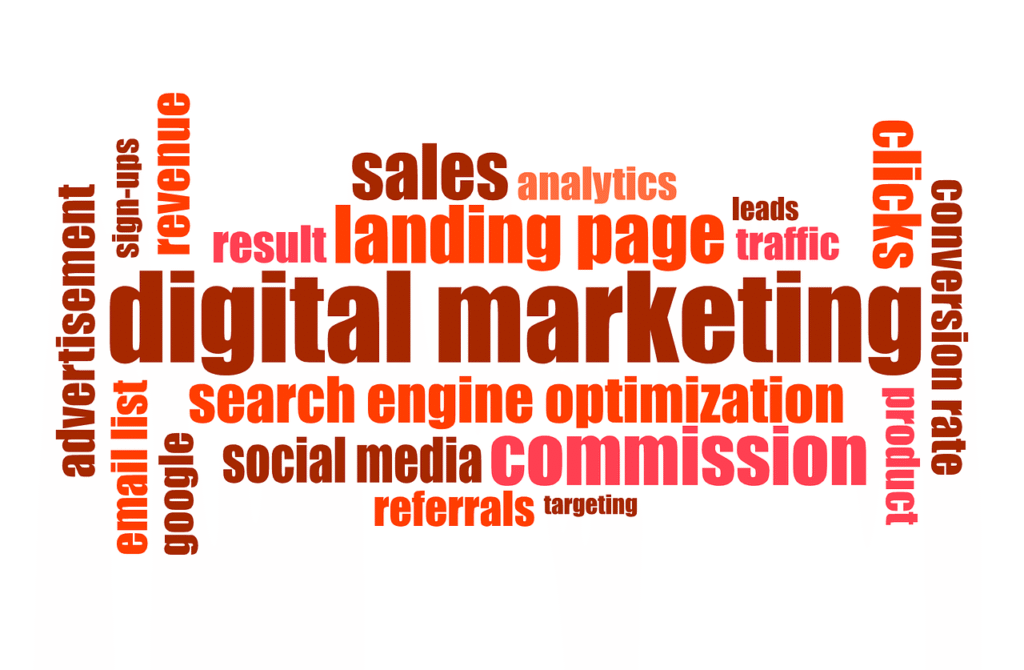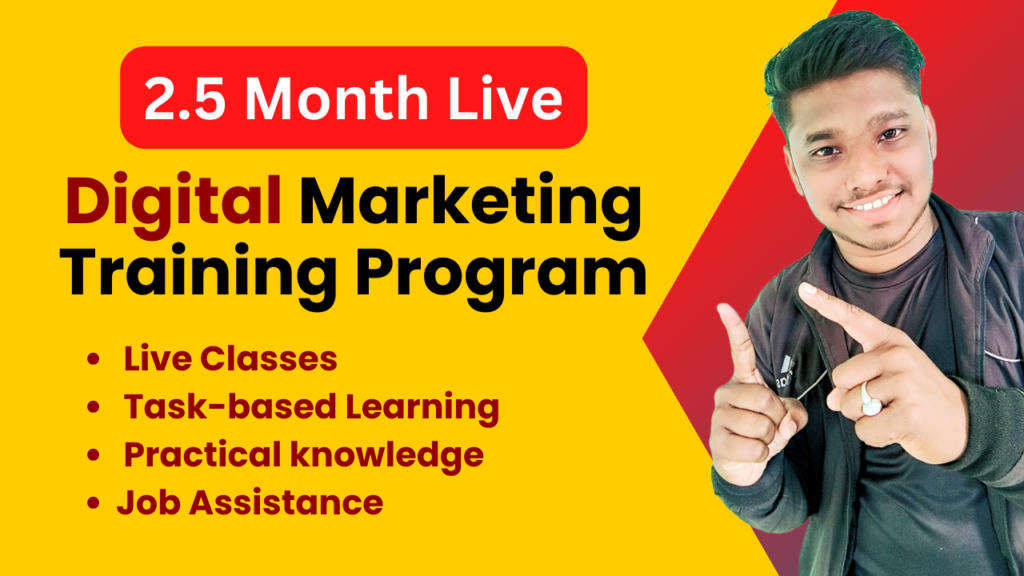Uncover the truth behind common Digital Marketing myths and facts! Many believe SEO is a one-time task or that social media is entirely free. In reality, success requires ongoing effort and strategic investment. Navigating the world of digital marketing can feel like walking through a minefield of bad advice. With constant algorithm updates and new platforms emerging, it’s easy for myths to take root and spread, leading businesses to waste time, money, and effort on strategies that simply don’t work.

Hear is 10 Digital Marketing myths and facts Debunked
For every business owner or marketer looking to make a real impact online, it’s crucial to separate fact from fiction. This article debunks ten of the most pervasive and costly digital marketing myths and facts, providing you with the clarity needed to build a strategy grounded in reality and results.
Myth 1: SEO is a One-Time Project
The Myth: Many believe that once they optimize their website and hit the first page of Google, their work is done. They treat Search Engine Optimization as a checkbox item rather than an ongoing process.
The Reality: SEO is a continuous marathon, not a sprint. Google’s algorithm updates thousands of times a year. Your competitors are constantly improving their content and backlinks. User search intent evolves over time.
- What to Do Instead: Adopt an iterative approach. Continuously monitor your rankings, update and refresh old content (a tactic known as “content pruning”), earn new backlinks, and technical SEO regularly to ensure site health. SEO requires consistent effort and adaptation.

Myth 2: More Website Traffic Automatically Means More Sales
The Myth: The primary goal of digital marketing is to drive as many people to your website as possible. High traffic numbers are seen as the ultimate indicator of success.
The Reality: Traffic without conversion is just vanity. 10,000 visitors who don’t buy anything are less valuable than 100 highly targeted visitors who convert into 10 paying customers. Quality always trumps quantity.
- What to Do Instead: Focus on attracting qualified traffic. Use precise keyword targeting, create detailed buyer personas, and ensure your messaging aligns with the intent of your audience. Prioritize conversion rate optimization (CRO) to turn the visitors you do get into leads and customers.
Myth 3: Social Media is a Free Marketing Tool
The Myth: Simply creating business profiles on Facebook, Instagram, and Twitter is enough to build a brand and drive significant results without spending a dime.
The Reality: Organic reach—the number of people who see your posts without paid promotion—has plummeted across all major platforms. While having a profile is free, your time is not. Building a community and generating results organically requires a massive investment in content creation and community engagement.
- What to Do Instead: Accept that social media success now almost always requires a paid advertising component to amplify your best content to a targeted audience. Budget for both content creation and strategic ad spending.
Myth 4: Email Marketing is Dead and Spam
The Myth: In the age of DMs and chatbots, nobody checks their email anymore. It’s an outdated channel that is ignored by younger generations and cluttered with spam.
The Reality: This is one of the most persistent and incorrect myths. Email marketing boasts an incredible average ROI of $36 for every $1 spent. It remains a direct, personal, and owned channel—meaning you control it, unlike social media algorithms.
- What to Do Instead: Build a permission-based email list and focus on providing genuine value. Use segmentation and personalization to send relevant content that your subscribers actually want to receive. It’s about nurturing relationships, not blasting promotions.
Myth 5: You Have to Be on Every Social Media Platform
The Myth: To be successful, your brand must have a presence on every new and existing social media channel, from Facebook and Instagram to TikTok, Twitter, LinkedIn, and Pinterest.
The Reality: Spreading yourself too thin across platforms leads to mediocre content and audience burnout. Your target audience isn’t everywhere; they have specific platforms they prefer.
- What to Do Instead: Practice strategic selectivity. Identify where your ideal customers actually spend their time online. Master one or two platforms that align with your brand voice and audience demographics before considering expanding.
Myth 6: Content Quantity is More Important Than Quality
The Myth: To win at SEO and social media, you need to publish new content as frequently as possible. The sheer volume of content will help you outpace competitors.
The Reality: Google and users reward value, not volume. One comprehensive, authoritative “10x” piece of content that thoroughly answers a user’s query will outperform ten shallow, hastily written blog posts. Thin content can actually harm your site’s authority.
- What to Do Instead: Shift your focus to content quality and depth. Invest in creating cornerstone content that serves as the ultimate resource on a topic. A slower publishing schedule of high-value content will yield better long-term results.
Myth 7: Digital Marketing Delivers Immediate Results
The Myth: After launching a new campaign, website, or ad set, you should see a dramatic and instant surge in traffic, leads, and sales.
The Reality: With the exception of some paid advertising campaigns, most digital marketing is a long-game strategy. SEO can take 6-12 months to show significant results. Building a brand community on social media takes consistent effort over time. Expecting instant gratification is a recipe for disappointment and premature cancellation of potentially successful strategies.
- What to Do Instead: Set realistic timelines and key performance indicators (KPIs) for different channels. Understand that strategies like SEO and organic social require patience and persistence before they pay off.
Myth 8: Negative Reviews and Comments Will Ruin Your Business
The Myth: Every negative Google review or critical social media comment is a public relations disaster that will scare away potential customers.
The Reality: How you handle negativity is more important than the negativity itself. A perfect 5.0-star rating can look suspicious. A mix of reviews appears more authentic. A thoughtful, professional, and empathetic public response to a complaint can actually increase customer trust by showing you care about resolving issues.
- What to Do Instead: Never delete or ignore legitimate criticism. Respond promptly and publicly, acknowledge the issue, and try to move the conversation to a private channel to resolve it. This demonstrates excellent customer service to everyone watching.
Myth 9: Paid Ads are a Waste of Money if You’re Good at SEO
The Myth: SEO and paid advertising (like Google Ads) are separate, competing strategies. If you’re successful with organic search, you don’t need to pay for ads.
The Reality: SEO and PPC (Pay-Per-Click) work best as complementary strategies. They can be used together to dominate search engine results pages (SERPs), taking both the top paid and top organic slots. Paid ads offer immediate visibility for new keywords or promotions, while SEO builds long-term, sustainable traffic.
- What to Do Instead: Consider an integrated approach. Use PPC to test new keywords quickly and gain instant traction for high-intent commercial terms, while simultaneously building your organic presence for broader, informational keywords.
Myth 10: Vanity Metrics are Key Performance Indicators (KPIs)
The Myth:
Success is defined by surface-level “vanity metrics” like your number of social media followers, page likes, or total website pageviews.
The Reality:
Vanity metrics look impressive in reports but rarely correlate to business outcomes like revenue or customer retention. 100,000 followers who never engage are less valuable than 1,000 highly engaged advocates.
- What to Do Instead:
Focus on actionable metrics that directly tie to your business goals. Replace vanity metrics with KPIs like: - Conversion Rate
- Customer Acquisition Cost (CAC)
- Email Click-Through Rate (CTR)
- Return on Ad Spend (ROAS)
- Lead Quality
Conclusion: Success Lies in Strategy, Not Myths
The digital marketing landscape is complex, but its foundation is built on providing genuine value and building real relationships with your audience. By dismissing these common myths, you can allocate your budget and efforts toward strategies that deliver tangible, measurable results.
The key is to remain agile, data-driven, and customer-obsessed. Question conventional wisdom, test everything, and never stop learning. When you base your decisions on reality instead of myth, you pave the way for sustainable growth and a powerful online presence. In this article i explain all 10 Digital Marketing myths and facts Debunked which is very important to know every digital marketer.
Before going to star career in digital makreting you can join the course of Digital marketing Marster class by Growthshala
Follow Mr Tarun Dewangan who is the founder of Growthshala on likedin

